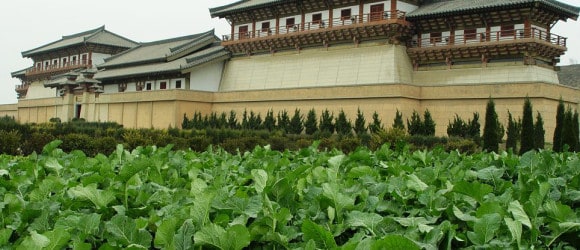The Human Cost of Early Mausolea
- At August 13, 2015
- By mausoleum
- In Mausoleum Design
0

A story came to light earlier this week of a massive find of more than 10,000 skeletons in what is being called the “criminal tombs”, dating back to about 202 BC, during the Chinese Han Dynasty. The name given this macabre find refers to the fact that many of the skeletal remains are bound by shackles and fetters.
As explained at this week’s Symposium for Research on Hanyang Mausoleum and Han Culture, the many remains were of prisoners who had been forced to build the Hanyang Mausoleum, and the tomb where Hanjingdi Liu Qi (188 – 141 DC), the fourth emperor of the Western Han Dynasty, and his wife are buried. There had been reports of an archaeological find of many prisoners as far back as 1972, but that excavation was more than a mile from this most recent discovery.
The mausoleum, built between the years of 153 and 126 BC, was constructed almost entirely by enslaved prison labor. In all, it is estimated that more than 100,000 shackled men worked on the project. The conditions under which they labored were brutal and unkind. Some skeletons, it was determined, had been halved in what must have been a gruesome death.
According to Ma Yonying, a researcher working with the Shaanxi Provincial Institute of Archaeology, the prisoners were shackled with handcuffs and bound with fetters, even during the working hours of building the tomb for the emperor. He explained that the mortality rate was exceedingly high for the prisoners who were expected to work in poor conditions while being subjected to indiscriminate corporal punishment.
“After their death, the prisoners were buried simply in the places near the emperor’s Mausoleum without any objects for funerary rites aside from the handcuffs and fetters, so we call the tombs criminal tombs,” Ma said.
Fortunately, today’s mausolea are able to grandly and exquisitely represent the life lived without requiring the sacrifice of many tens of thousands of individuals.
